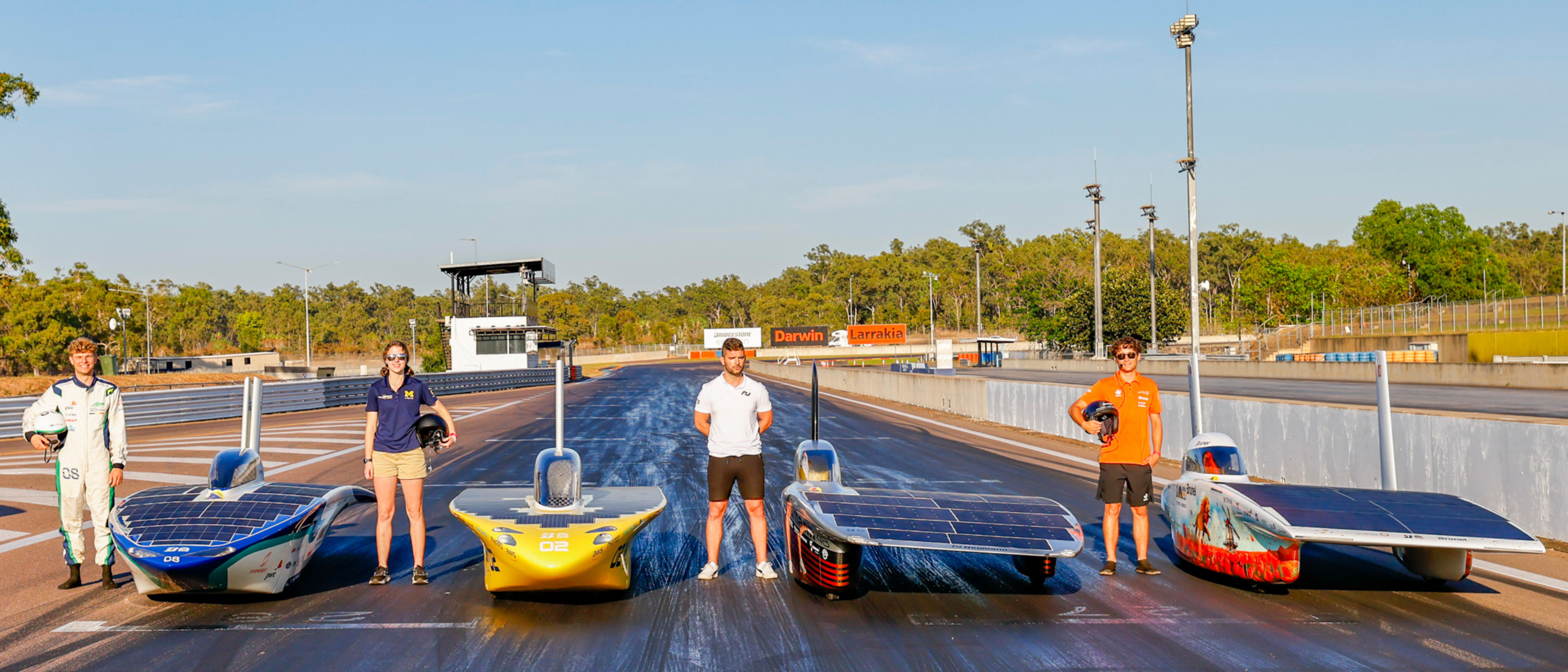
2025-08-27 10:35
As the sun rises on the remote Northern Territory outback, a rusty old windmill looms above the vast bushland. The scene is reminiscent of an earlier time — the rural landscape like something from an old bush poem. But below the line of the horizon lies a scene more akin to science fiction.
Six futuristic vehicles, shaped like alien spaceships, are parked outside the Dunmarra Wayside Inn, with the solar cells plastered across their bonnets soaking up the glow of the morning sun.
Dozens of young engineers are buzzing with nervousness, frantically yelling instructions at each other in Dutch, Japanese, French and Swedish.
.png?r=7c5ad5c3900cbc224751dc806e750636)
It is partway through the World Solar Challenge, a five-day event in which university students from around the world race 3,000 kilometres — from Darwin to Adelaide — in electric vehicles they have designed, all powered by solar energy.
After leaving Darwin on Sunday morning, these six teams made it some 630 kilometres down the road that day before setting up camp at 5pm, as per competition rules.
"These cars run on the sun and their batteries are pretty small, especially under this year's regulations," Western Sydney University (WSU) team leader and engineering student Ruari Milligan says.
"Getting these morning charges is essential."
The real challenge begins once the cars are back on the road, as teams navigate the perils of the Stuart Highway in the low-lying, lightweight vehicles.
.png?r=7c5ad5c3900cbc224751dc806e750636)
"We're sharing the roads with 63-metre-long road trains while navigating cattle grids, roadkill, emus jumping out [in] the road, fires, heavy winds," WSU's Aaron Sharma says.
"The Australian highway really does teach you some lessons."
Visiting competitors haven't been taking the challenge lightly.
The reigning champions, who have travelled all the way from Belgium, prepared for the competition by putting their drivers through heat endurance training.
"We've been training in climate chambers at higher humidity and temperatures, just to see how our bodies react and how our reaction times change," Yarne Billen, one of the Innoptus Solar Team pilots, says.
"Here in the Northern Territory, what you call 'winter' is summer in Belgium."
No amount of training, however, could save competitors from the bumpy ride.
"In Japan we have such smooth roads, it's my first time running on such a bumpy road," Kentaro Kiyono, from Wakayama University, says.
"I had no idea what was happening in my car, I was so surprised."
